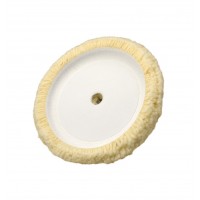Amplifier Zapco Z-150.4 AP
More about the product
- Use our consulting room
- You can return the goods to us within 14 days
- Try the product at our store
Amplifier Zapco Z-150.4 AP
The Z-AP model series represents the pinnacle of Zapco's range of amplifiers with a focus on uncompromising audiophile sound. Who is an audiophile anyway? He is a sound fanatic whose only passion is accurate sound reproduction that brings all the purity of a live performance to recorded music. You may have already come across the term audiophile sound especially in the case of high-end home sound systems from the famous McIntosh or Bryston companies, but it has always been considered unattainable in the automotive environment. At Zapco, however, they disagreed with this statement and began to search for perfect sound reproduction. In 2000, the amplifiers of the C2K Competition model series were introduced, followed by the new Z series in 2000 with high-end internal components adapted purely for "sound quality". These were the first amplifiers developed by listening rather than measuring and were rightly labeled as the best Zapco amplifiers ever. And how did Zapco respond? “Thanks, but we think we can do even better. And so they did. High-end audiophile capacitors and op amps have been upgraded, the power supply has been redesigned and several board modifications have been made to create the new Z-LX series. It not only beat car amplifiers with its quality, but also beat hi-end home audio amplifiers in tests. And how did Zapco respond again? “Thanks, but we think we can do even better. And this year, the Z-AP series was introduced, setting new standards of sound quality for vehicle and home sound systems.
The main features of the Zapco Z-150.4 AP amplifier
- 4-channel "audiophile" class A/B amplifier
- Stable up to 2 Ω, in the bridge up to 4 Ω
- Signal-to-noise ratio over 110 dB
- Patented RCA connectors
- 0.1% resistors for the lowest possible noise level
- Continuous input power control
- TI LME49720 (BJT) operational amplifiers on the inputs
- TI LME49720 (BJT) operational amplifiers in the signal path
- WIMA MKS2 series capacitors in the signal path
- Extremely low ESR limits throughout
Important features of Zapco Z-AP amplifiers
Audiophile quality home sound system in a car? Absolutely! It doesn't matter whether you are at home or in the car on the road, the function of the amplifier remains the same with clear and accurate sound reproduction. If you really want to hear what your home speakers can do, get Zapco's Z-AP Series AC~DC Power Supply and Amplifier. Then you'll find out why your car system can sound better than it does at home. How did they do it at Zapco? They took the best of the Z-LX amps, tweaked the circuitry, had proprietary electrolytic caps made to spec for the power supply section. In the signal path, electrolytes have been replaced by high-end WIMA capacitors. Furthermore, a new operational amplifier was used for the input stage with very low noise, as well as the smoothest sounding operational amplifier for the signal path. The input drivers were doubled and the operating voltages of the corresponding terminal output devices were increased. For faster heat dissipation and increased efficiency, a new insulating material developed for aviation and space was used. 0.1% resistors (not 1%, but 0.1%) were used in the differential input stage to achieve the lowest possible values. Furthermore, patented RCA connectors with extra strong gold plating were developed for perfect signal transmission. Even the low-noise gain control has been improved and a stepper has been added to make adjusting the level a breeze. To top it all off, a new look with a matte black finish and a massive copper plate with the logo and serial number right on top. The result is a high-end SQ amplifier with the highest sound quality designed for both listening and measurement. A signal-to-noise ratio of over 110 dB will enable absolutely clear sound even in the quietest musical passages.
About Zapco Amplifiers
Zapco is the oldest high-end car audio brand in the world, specializing in high-end car amplifiers and DSP processors. The company was founded in the USA back in 1974 and has been collecting one award after another since then. And this both from prestigious organizations that evaluate the quality of products and innovations, as well as at global competitions focused mainly on sound quality. Zapco amplifiers represent audiophile quality without compromise, defining the standard of quality and setting the criteria by which other products in the industry are judged. At Zapco, for over 45 years, they have been constantly looking for innovative ways to bring better sound to the automotive environment, and this relentless pursuit of absolute sound quality has always resulted in new technologies and high-end products. Are you asking why? Because nothing else can capture the soul and bring tears to the eyes like music. Music can make you dance for joy..... of all the arts, music has the most powerful and immediate effect on your body and mind. Reproducing music in all its beauty and delicacy deserves nothing less than the best efforts of all Zapco employees. And also because music matters!
| Catalog number | Z-150.4 AP |
| Brand | Zapco |
| Links | Official web presentation (English) |
| Number of amplifier channelsAmplifiers are divided into: - Monoblocks - 2-channel - 3-channel - 4-channel - 5-channel - 6-channel - multi-channel Each channel is used to power one speaker for the coaxial type, or one side if they are component speakers. Monoblock type amplifiers are mainly used for subwoofers. 2-channel are suitable for both subwoofers and, for example, the front pair of speakers in a car. 3-channel is used for front or rear speakers + subwoofer. 4-channel are used for front + rear speakers or 1 pair of speakers + subwoofer. 6 or 5-channel are used for 2 pairs of speakers + subwoofer, most often. Bridging means connecting the amplifier to a bridge, using the + pole from one channel and the - pole from the other channel. In most cases this is shown as "BRIDGED" on the amplifier. | 4 |
| Energy class of the amplifierAmplifiers are divided into two basic classes: analog and digital . Analog amplifiers (A/B) have higher consumption requirements, but usually have a more natural sound. Digital amplifiers (D) have significantly lower consumption and higher efficiency, but the sound may not be as faithful as with classic analog amplifiers. | A/B |
| RMS power into 4 ΩRMS power when loading speakers or subwoofer at 4 Ω. RMS power is the constant power of the amplifier and is one of the most important parameters when choosing an amplifier. | 4 x 150 / 2 x 500 W |
| RMS power into 2 ΩRMS power when loading speakers or subwoofer at 2 Ω. RMS power is the constant power of the amplifier and is one of the most important parameters when choosing an amplifier. | 4 x 250W |
| Frequency rangeThe ability of the amplifier to reproduce the signal from the lowest frequency to the highest = faithfully reproduce the sound in a specific frequency band. Professionally: In the frequency range from 40 to 16,000 Hz, the vast majority of fundamental and overtones (harmonics) of all musical instruments are found. We are interested in the course of the radiated sound pressure in this range of frequencies when the loudspeaker system is supplied with constant power. We call this course the frequency characteristic, which tells us the level of radiated sound pressure in decibels (dB) depending on the frequency. The frequency characteristic of a speaker or speaker system can be expressed most succinctly with a graph. Mostly, however, the frequency characteristic is indicated by indicating the maximum tolerance of the sound pressure in the given frequency range, e.g. 50 to 15,000 Hz -+ 6 dB. Since the frequency characteristics of loudspeakers and systems in general are quite uneven, some manufacturers do not even specify this maximum tolerance of sound pressure in decibels in their catalogs for reasons of prestige. Data impoverished in this way is unfortunately worthless. What is valid is that the manufacturer offers a speaker system with a frequency range of 30 to 20,000 Hz, if he is worried about stating the maximum unevenness of the sound pressure in this range, because he can have a tolerance of, for example, +- 20 dB. The unevenness or undulation of the frequency curve in good speaker systems for high-quality music performance should not exceed +-3 dB in the 80 to 12,000 Hz band and +-6 dB in the 40 to 16,000 Hz band. Greater unevenness already depletes or emphasizes certain tonal areas, which can cause audible or even disturbing distortion. The proportion between fundamental tones and higher harmonics also changes, thereby changing the color of the sound, and individual musical instruments as well as the entire musical image sound unnatural. | 10 - 30000 Hz |
| Harmonic Distortion (THD)Total harmonic distortion indicates how much the input signal is distorted in the amplifier. Distortions appear as overtones contained in the output signal. The proportion of originally absent parts of the signal is given as a percentage, typical values are between 0.001% and 0.5%. Distortion is measured in their power band. If it exceeds the limit of 0.7% from a certain power, it is the value of the output power of the given amplifier, from which it no longer plays without distortion and from which the distortion usually increases steeply, so that no further increase in power can be counted on. The lower the value, the better. | < 0.05% |
| Signal-to-noise ratioThe signal-to-noise ratio means that the output signal always contains noise. The signal-to-noise ratio expresses how much of this noise is compared to the useful signal. The so-called A value is given, which does not take deep and very high frequencies into account. This corresponds to the characteristic of human hearing, which is not so sensitive to deep frequencies, especially below 1 kHz. The higher the value, the better the amplifier is. | > 110 dB |
| Input sensitivityIn order for the amplifier to perform its function correctly, it requires an input signal of a certain level, which is different for car radios. It is measured in "Volts" (e.g. 2 V, 4 V, etc.) The higher the value at the output of the pre-amplifier, or car radio, the less demands are placed on the power of the amplifier. However, the amplifier must allow this input sensitivity, and for that reason this value is also given for the amplifier. | 1 - 9 V |
| High level inputsThe high-level input on the amplifier allows connection directly to the existing speakers in the car without additional purchase of an external high/low adapter. Important equipment in the case of installing an amplifier on an original car radio. | No |
| Socket input terminalsFerrule terminals allow better wiring contact to the amplifier. It is also a more secure form of terminals. If you are tightening the sleeve terminals, we recommend retightening them after 1 day, as the connected cable gradually compresses. | Yes |
| Input for wired remote controlIf the amplifier has a remote control input. | No |
| Dimensions of the amplifier | 190 x 62 x 444 mm |


























